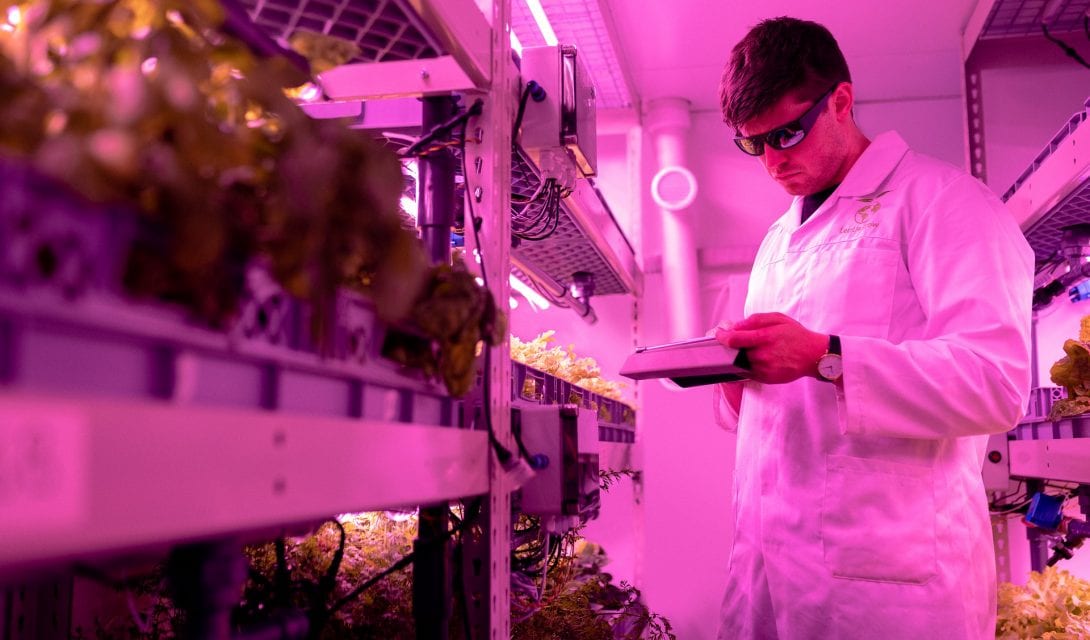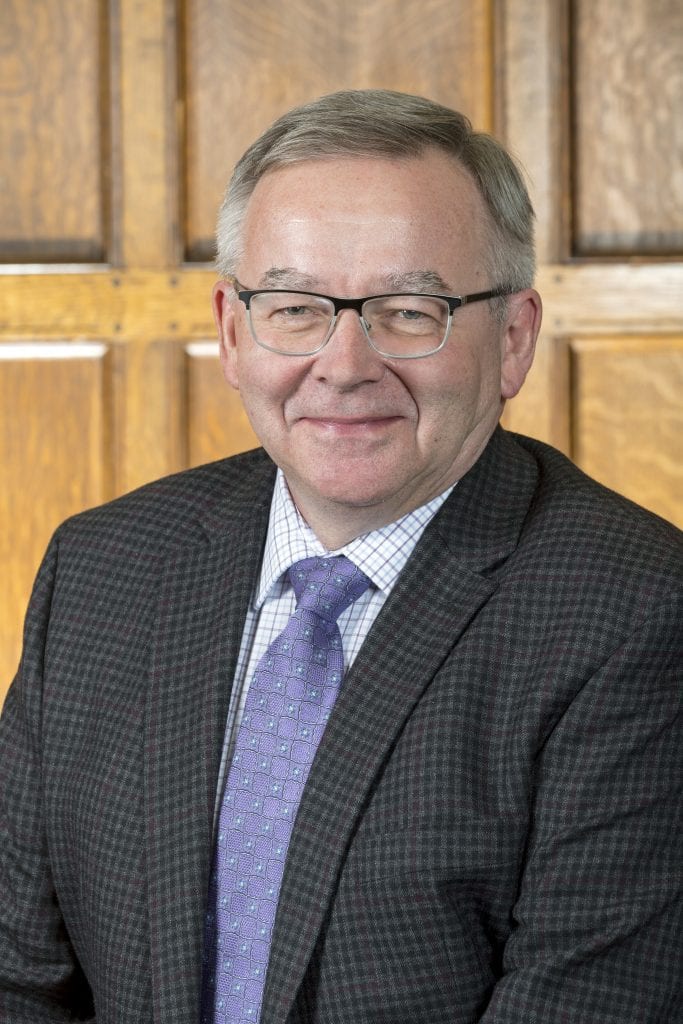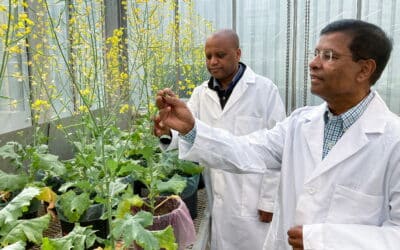What is RDAR and what does it mean for agriculture research work in Alberta?
Editor’s note: This interview has been edited for length and clarity.
Tom Steve, vice-chair of the interim board of Results Driven Agriculture Research (RDAR), gives Alberta Seed Guide readers an in-depth look at exactly what this new research organization is and how agriculture research work funding will be handled in Alberta moving forward. Steve is the general manager of the Alberta Wheat Commission and Alberta Barley. He has spent years serving farmers across Alberta and representing their priorities to those inside and outside of the agriculture world.
Alberta Seed Guide (ASG): In general, what is RDAR?
Tom Steve (TS): The genesis of Results Driven Agriculture Research goes back to the campaign promise by the United Conservative Party in the last election — to move funding decisions for research into the hands of farmers and ranchers… So, to shift the emphasis towards the producer need over what the government policy priorities might be at any given time and to focus more on productivity and competitiveness.
ASG: How is RDAR set up?
TS: RDAR was initially established through a grant under the Canadian Agriculture Partnership (CAP), through a grant that was administered by the Alberta Barley commission. A $2 million CAP grant to essentially get the organization up and running… That allowed RDAR to assemble the resources through consultants primarily, and also staff from the agriculture ministry to get the organization up and running and pay the expenses of directors and all the normal things that you would look for in the establishment of an organization, hire legal resources, and so on. By July 22, 2020, RDAR was incorporated as a federal not-for-profit corporation. And that has allowed the organization to be fully up and running.
Only about $600,000 of that $2 million dollar CAP grant was used by the Alberta Barley Commission in the start-up phase, we’ve signed that back to RDAR actually to continue to establish the organization… Moving forward though the $37 million a year funding agreement with the government of Alberta will allow RDAR to be fully functional.
ASG: How does RDAR include farmers?
TS: The class A membership of RDAR consists of 33 farm organizations representing all the crop commissions, the livestock commissions and membership-based farm organizations in Alberta. Those 33 organizations will elect the permanent board of directors at an annual general meeting that we expect will be held in March 2021. So ultimately, the farm organizations through their representatives will determine the direction of RDAR.
The permanent board will consist of up to 11 members. Seven of those will be nominated from the membership and elected at an AGM, and four other directors will be nominated by the existing board of directors and also elected by members.
ASG: What government programs/research has RDAR taken over from Alberta Agriculture and Forestry?
TS: There will be a number of programs that will be administered by RDAR going forward. For example, the transfer of certain research scientists and capacity over to the University of Alberta, predominantly in crop and livestock research. Transfer of certain functions from the Ministry over to the University of Lethbridge, Lethbridge College, that will involve transfer responsibility for the Alberta Irrigation Technology Centre and certain functions of the Brooks Research Station. And then the barley breeding program at the Field Crop Development Center in Lacombe will be transferred to the responsibility of Olds College.
ASG: How do the partnerships work? What is the flow of communication like between RDAR and the schools?
TS: It’s early days, but we have established an open dialogue with all of those educational institutions on the path forward. As a matter of fact, there’s one other element of RDAR and that’s the advisory committee.
The advisory committee has 50 different representatives on it, including all the colleges and universities, and I actually chair the advisory committee. We’re in constant contact with not only the farm organizations, but the educational institutions. Some of the finer details of how we measure the success of those programs going forward that have been transferred, have not been fully worked out. Some of them will be written into formal agreements.
ASG: What stage is RDAR at right now?
TS: They’ve staffed up with senior management and research program managers, administrative functions, communications. So those resources are in place, the search is underway for a permanent chief executive officer. We have an interim CEO at the moment, but a search is underway for a permanent CEO and we expect that that position would be filled by early in 2021. But essentially, they have the staff in place.
In addition to that, the first research call was rolled out, $4 million research call that we announced on October 22. We’ll be evaluating proposals from scientists and organizations to start the funding flowing out to scientists as soon as possible.
ASG: What kind of research projects is RDAR looking to support?
TS: The research call itself is targeted at four key areas — soil health and quality, water quality and efficiency, seed production, and plant and animal diseases and pests. Those might seem like, rather broad areas, but there are specific projects within those that I’m sure will come to the fore.
There’s also existing research calls in the marketplace where those research projects could be applied to this funding call. For example, we have something in Western Canada called the Agriculture Funding Consortium, and the majority of the crop groups in Western Canada are members of the Ag Funding Consortium. There may be projects that have been under consideration through that research call that would apply to this one.
ASG: How does the long-term funding of RDAR work? Because when we’re talking about research work, a lot of the time we’re looking at projects that will take 10 years.
TS: Well, the notion of this being a 10-year, funding agreement was really based on what you just said — which is that most research projects have a minimum of three, more normally a five and sometimes a 10-year funding horizon. So, we wanted that certainty in terms of the flow of funds from the government of Alberta. Of course, anything can happen over time. But there will be an annual allocation that will be provided to RDAR and the agreement that is in place that provides for those amounts. We wanted that certainty built into the agreement.
There is a five-year mandatory review. So, after five years, the parties will look at how things are working. And I think that’s reasonable because of the fact that governments change and government’s priorities change. But unwinding a 10-year agreement would be a big undertaking.
ASG: How does RDAR compare to how ag research is handled in other provinces?
TS: Well, this is a unique model to Canada. I think it’s a test case, because the government has taken a large amount of money and trusted a third-party producer led entity to administer it. I guess the difference is that in most other provinces, they have a base budget for their agriculture ministries, most of them don’t have the same level of internal research capacity that Alberta Agriculture had. I think maybe a difference is that in recent weeks, Alberta Agriculture has experienced some downsizing, and much of that is research capacity that was internal. And a number of those scientists have transitioned over to the universities and colleges, but certainly not all of them.
But I think the main difference between Alberta and other provinces is that it has traditionally done more internal research than any other province in Canada. And now, it’s moving towards more of a model that is in line with other provinces, for better or for worse.
ASG: What are the future plans for RDAR over the next 10 years?
TS: Our business plan has just been developed and really covers the initial years of operation. So, to say that we have a 10-year plan is would not be accurate at this stage. We’re trying to cover the start-up phase and really the first few years of operation. It will be up to the permanent Board of Directors, and the permanent management team, including the permanent CEO, to develop a longer-term strategy for the organization.






